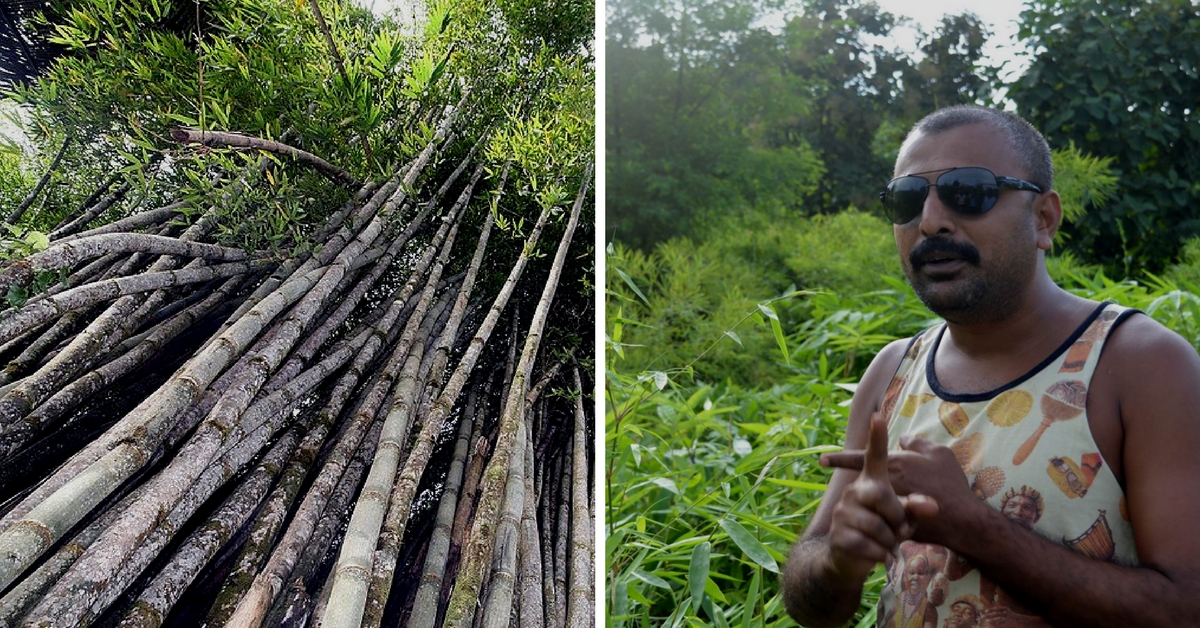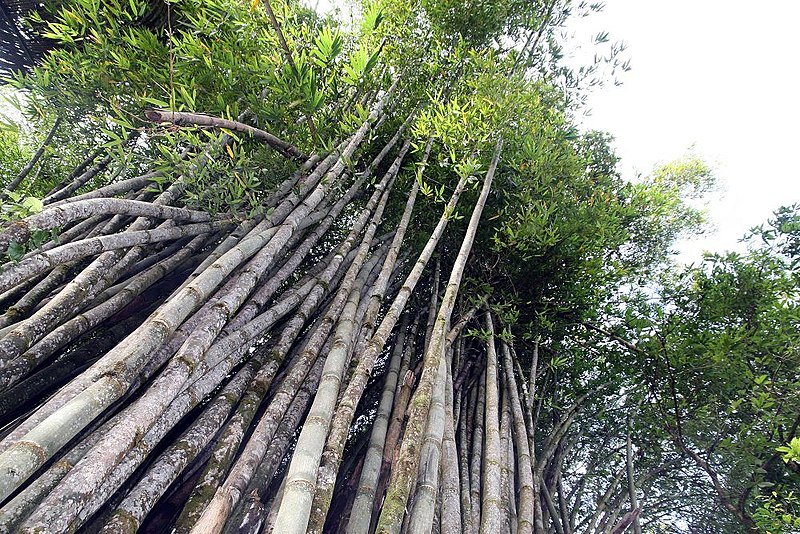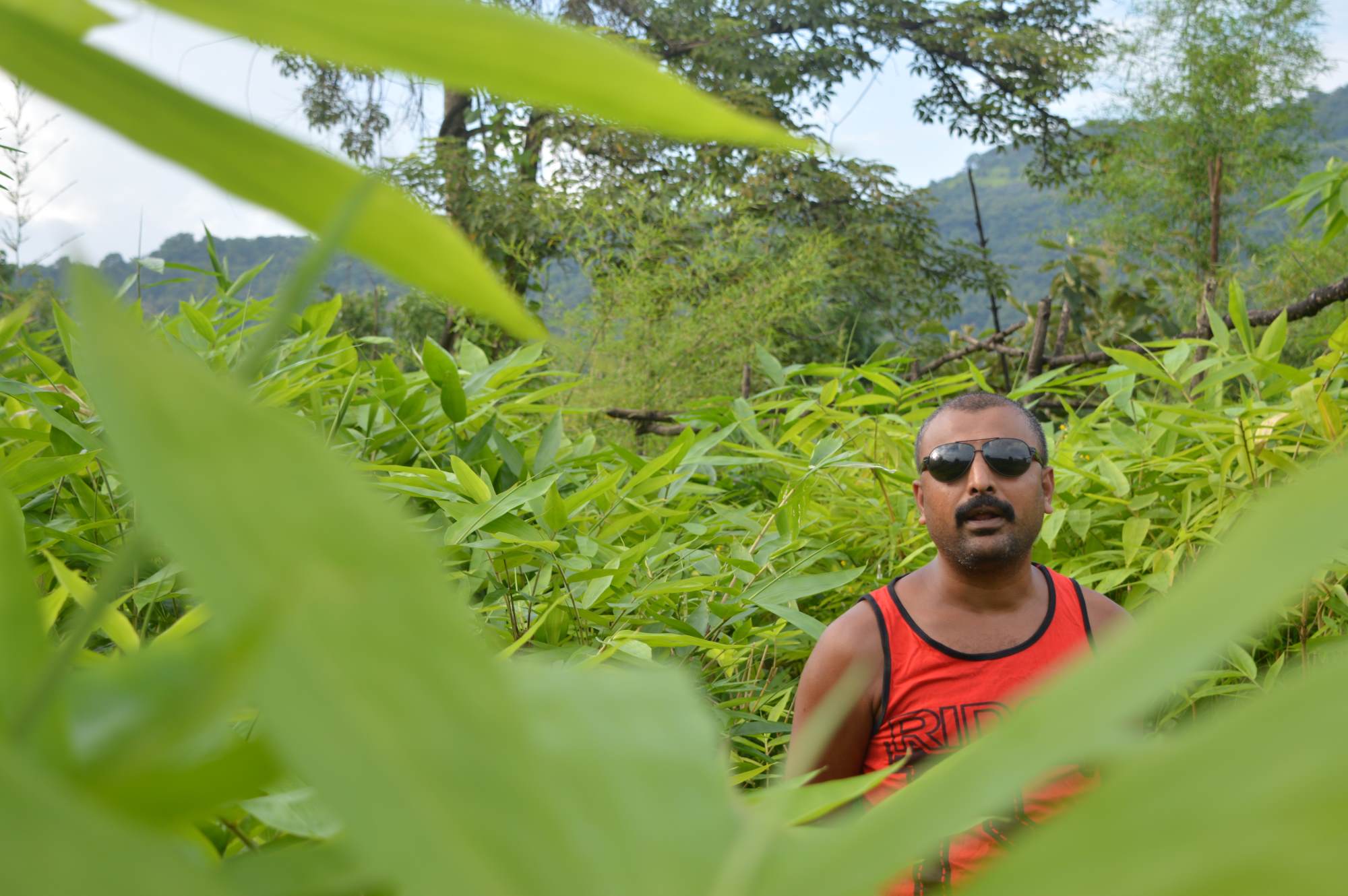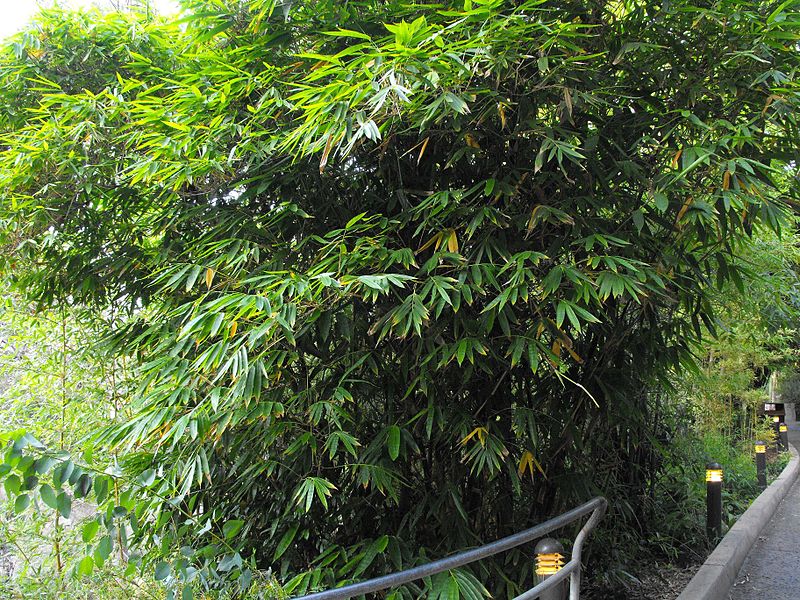This Unique Nursery in Maharashtra Is Home to 24 Varieties of ‘Green Gold’!
Anand Patki is an agripreneur who has sourced bamboo from different parts of the country, and set up India’s first bamboo nursery.

Dendrocalamus giganteus, also known as dragon bamboo, is a giant tropical and subtropical, dense-clumping species native to Southeast Asia. It is one of the largest bamboo species in the world and typically grows to a height of 33 metres.
Bamboo, which comes from the Kannada word Bambu, and considered as the wise man’s timber, is the planet’s most massive grass typically reaching full height and width within the first 12 months of its life.

On a November evening, we met Anand Patki, the owner of the nursery in Dongroli village, a journey of 152 km from Mumbai. The 14-acre nursery sits on a hillock and is home to 24 varieties of ‘green gold’, as many call it. Surrounded by a deciduous forest, the weather in Dongroli, 10 kms from the State Highway 97, is suitable for bamboo cultivation as rainwater does not stagnate despite its neighbourhood logging nearly 2000 mm of rainfall every year.
Also Read: How Bamboo Schools Are Helping Students Continue Their Education in Maoist-Affected Bastar
The hill on the nursery’s south and west side arrests heavy rain showers and wind acting as a protecting wall to the mother plants. “Google maps helped me to decide and choose the nursery site,” says Patki, a landscape artist, who found that most nurseries were either unaware of the species they had or lacked knowledge of fundamental issues related to bamboo cultivation.
Asked why he set up a nursery instead of a plantation, Patki responds by saying that he was deeply inspired by veteran bamboo promoter Ajit Thakur (who also happens to be his father-in-law) and he wanted to make quality planting material available.

Though the nursery is home to 24 varieties, Patki has selected seven commercially essential bamboo species which yield good returns. The selection of bamboo species is crucial before planning a plantation as bamboo flowers once in its life cycle, and depending upon the species, it can be 40 or 60 years. Once bamboo flowers the mother plant dies, making it necessary that the right one is selected for cultivation.
Setting up a nursery in such a remote location was no easy task. “It took me almost a year just to demarcate the plot for it was not farmed for a couple of decades. Then I had to set up the polyhouses, shade net and build a pond to store rainwater. It had to be fenced too because cattle belonging to the locals had a field day feeding on the saplings and then were incidences of the locals stealing away my farm equipment,” Patki informs us.
A bamboo plant can survive harsh climatic conditions, but if provided with enough water and organic fertigation it is likely to give a good yield.
“It takes around three years to have mature shoots to pop out and ready to be harvested. After six years one can start harvesting timber bamboo each year,” says Patki.

According to the India State of Forest Report 2011, the total bamboo bearing area in the country is 13.96 million hectares. On a conservative estimate, it constitutes about 12.8% of the total area under forests is under bamboo in India. The annual production of bamboo in India is about 4.6 million tonnes, of which about 1.9 million tonnes is used by the pulp industries. The annual yield of bamboo per hectare in India varies between 0.2 and 0.4 tonnes with an average of 0.33 tonnes per hectare, depending upon the intensity of stocking and biotic interferences.
Arunachal Pradesh leads with 16,083 sq kms under bamboo bearing area followed by Madhya Pradesh (13,059 sq km) Maharashtra (11,465 sq km) and Chattisgarh (11,368 sq. km). Under the National Agro-forestry & Bamboo Mission (NABM), the Central government has established 108 markets closer to villages providing marketing avenues to bamboo growers as well as finished products.
Also Read:Two Brothers Wanting Power For Their Farms Invented A Bamboo Windmill That Is 10 Times Cheaper!
Additionally, efforts are being made to popularise bamboo products through participation in trade fairs. Assistance is also provided to farmers/bamboo growers for nursery establishment, plantations in the non-forest area, imparting training for preparation of nurseries and bamboo plantations, establishing of bamboo markets for farmer products, etc. A total of Rs 1689.36 lakh was released for the entire country under the NABM during 2016-2017, of which Rs 993.48 lakh was allocated to the eight states in Northeast India.
The commercial varieties available at the Dongroli nursery are Dendrocalamus brandisii, Dendrocalamus giganteus, Dendrocalamus longispathus, Bambusa tulda and Thyrsostachys oliveri.

Elaborating the economics behind commercial bamboo cultivation Patki says, for instance, 350 clumps of Dendrocalamus brandisii planted on an acre is likely to produce six new shoots each year, meaning one ends up with 2100 bamboos. With each bamboo weighing around 120 kg, it is 2,52,000 kg of timber. “The flowering cycle of this species is 66 years that means timber can be harvested for 60 long years,” says Patki.
Patki is proud of the Bambusa cacharensis variety which he acquired from the Northeast. “I acquired this important bamboo species after consistent trials for three long years. I managed to bring some 100 rhizome offsets, of which only 13 have survived.”
His efforts are laudable as bamboo holds a lot of promise for the country’s agriculture sector both by providing livelihood to farmers and artisans who make baskets and other products. Sunil Joshi, the Chairman of Bamboo Society of India, Maharashtra chapter, says, “We require many more people like Anand Patki to make the bamboo movement a people’s movement.”
(This article was written by Hiren Kumar Bose)
Like this story? Or have something to share? Write to us: [email protected], or connect with us on Facebook and Twitter.
NEW: Click here to get positive news on WhatsApp!
This story made me
- 97
- 121
- 89
- 167
Tell Us More
We bring stories straight from the heart of India, to inspire millions and create a wave of impact. Our positive movement is growing bigger everyday, and we would love for you to join it.
Please contribute whatever you can, every little penny helps our team in bringing you more stories that support dreams and spread hope.



















